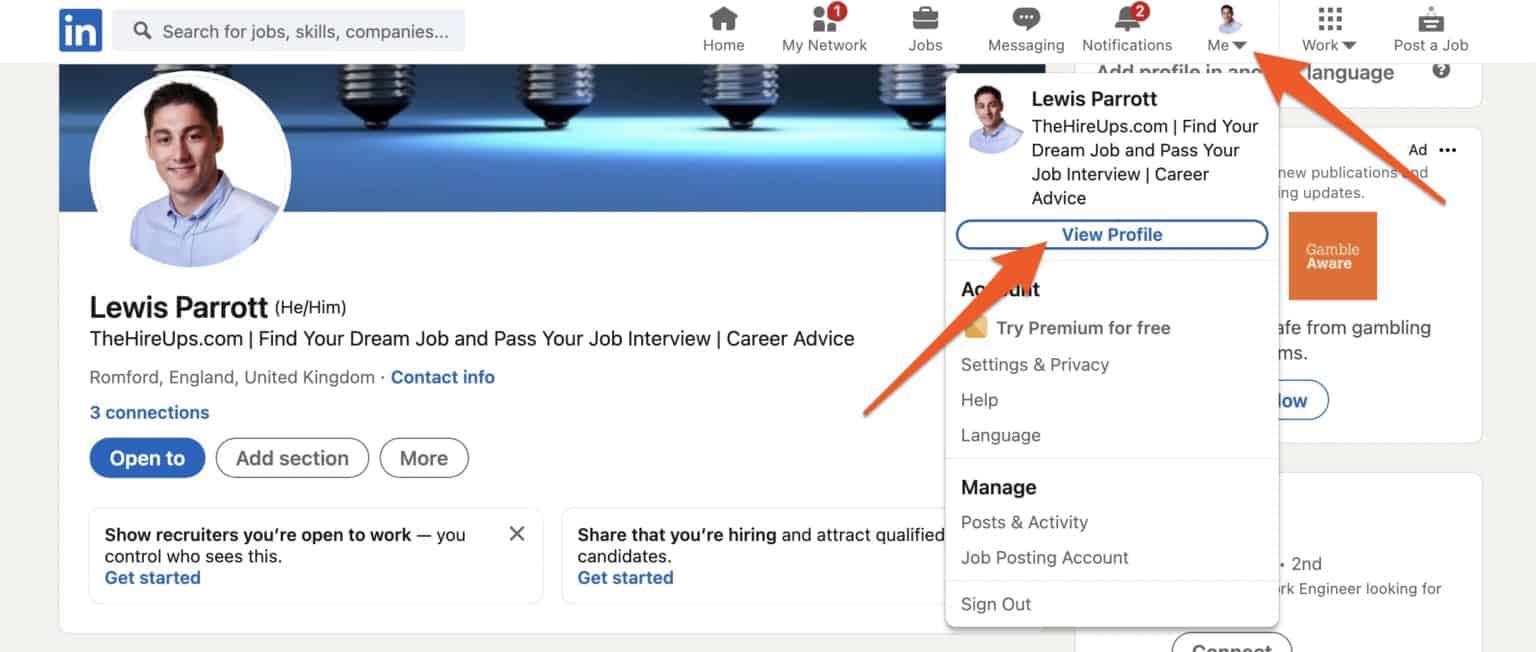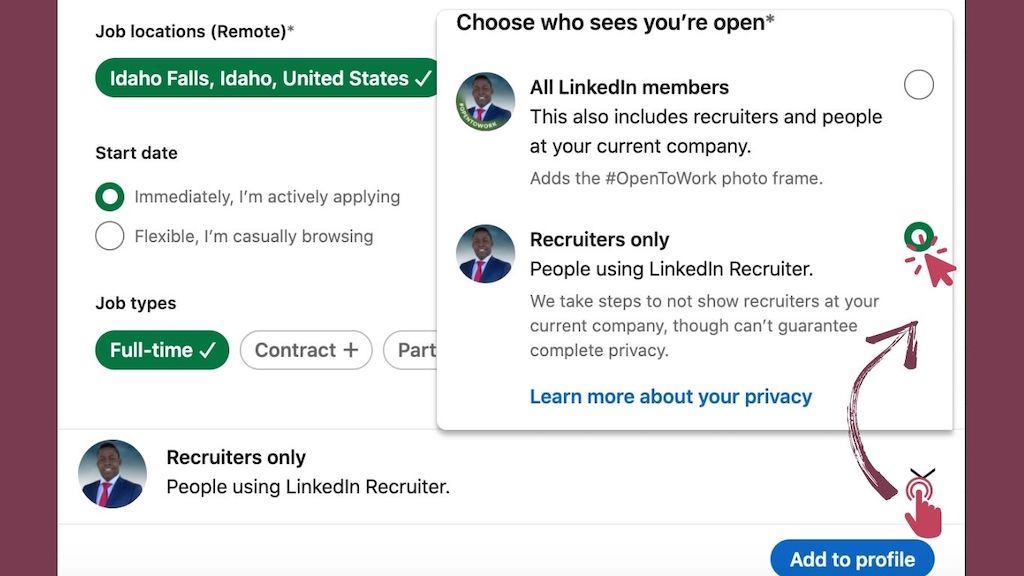LinkedIn has become a treasure trove for recruiters looking for talent, especially in the ever-changing job market. With many professionals actively seeking new opportunities, understanding how to navigate this platform can greatly enhance your recruitment efforts. In this blog post, we will explore useful tips for finding individuals who are open to work, helping you connect with potential candidates effectively.
Understanding the LinkedIn Landscape

Navigating the LinkedIn landscape might feel overwhelming at first, but it's all about understanding how the platform works and leveraging its features to your advantage. Here are some key aspects to keep in mind:
- User Profiles: Each LinkedIn user has a profile that highlights their skills, experience, and interests. Look for profiles that explicitly mention being open to new opportunities.
- Open Candidates Feature: LinkedIn offers an "Open Candidates" feature, allowing users to privately signal to recruiters that they're looking for jobs. You can easily filter candidates who have activated this feature in your searches.
- Keywords and Tags: Incorporating relevant keywords in your LinkedIn searches can make a world of difference. Think about industry-specific terms or skills that align with the roles you're looking to fill.
- Networking Potential: One of LinkedIn's greatest strengths is its networking capability. As a recruiter, you can engage with individuals through connection requests, InMails, or even commenting on posts to establish rapport.
- Groups and Communities: Participating in industry-specific groups can help you find professionals who are passionate about their field and may be exploring new opportunities.
By familiarizing yourself with these elements, you'll be better equipped to identify and connect with potential candidates who are actively seeking new roles on LinkedIn. Remember, the key is to be genuine and approachable in your interactions, fostering an environment where potential candidates feel valued and open to conversation.
Utilizing LinkedIn Features for Recruitment

LinkedIn is a treasure trove of features specifically designed to facilitate recruitment. As a recruiter, leveraging these tools can significantly enhance your sourcing strategy. Here’s how to make the most out of LinkedIn’s various functionalities:
- Search Filters: LinkedIn offers advanced search filters that allow you to narrow down candidates based on location, experience level, industry, skills, and more. Utilize this feature to create a shortlist of ideal candidates.
- Job Posts: Creating engaging and well-targeted job postings can attract the right talent. Make your job descriptions compelling by incorporating vital aspects such as company culture, growth opportunities, and specifics of the role.
- InMail: Don't underestimate the power of LinkedIn InMail. This feature lets you reach out directly to potential candidates, even if you’re not connected. Craft personalized messages that showcase your interest in their profile to increase response rates.
- LinkedIn Groups: Join relevant groups in your industry to network with potential candidates. Participating in discussions not only helps you build relationships but also positions you as a thought leader.
- Recommendations and Endorsements: These features can provide insights into a candidate's skills and reliability. Check out endorsements on their profile to gauge how others perceive them in their field.
By leveraging these LinkedIn features, you can streamline your recruitment process, making it more efficient and effective.
Best Practices for Engaging with Candidates
Engaging with candidates effectively can make all the difference in attracting the right talent. Here are some best practices to keep in mind:
| Practice | Description |
|---|---|
| Personalization | Address candidates by their names and reference specific details from their profiles. This shows that you have taken the time to understand who they are. |
| Timeliness | Respond promptly to inquiries and messages. Delays can create a negative impression and may lead candidates to lose interest. |
| Value Proposition | Clearly articulate what sets your company apart. Highlight unique benefits and opportunities that would make candidates excited to join your team. |
| Follow-Up | If candidates show interest, be sure to follow up. Even if they aren’t currently looking, maintaining contact can nurture future opportunities. |
| Feedback | Provide constructive feedback when necessary. This approach not only helps candidates improve but also fosters a positive relationship. |
These best practices can help you build rapport and create a positive candidate experience, ultimately attracting top talent to your organization.
Crafting Effective Messages
When reaching out to potential candidates on LinkedIn, the message you send can make all the difference. Crafting an effective message is crucial in grabbing their attention and persuading them to respond. So, how can you do that? Let’s break it down.
- Personalization is Key: Always customize your messages. Start with their name, mention specific skills or experiences that caught your eye, and, if applicable, refer to shared connections or interests. This shows that you've done your homework and truly value them as a candidate.
- Be Clear and Concise: Make sure your message is direct and to the point. Clearly state why you’re reaching out, what position you’re hiring for, and what the organization can offer them. Avoid long-winded explanations; most people skim through messages.
- Value Proposition: Highlight what makes the opportunity unique. Is it the company culture? Growth opportunities? Specific projects they’d work on? This can entice candidates to learn more.
- Call to Action: Always include a clear call to action. Whether it’s asking them to reply to the message, schedule a call, or check out a job posting, make it easy for them to take the next step.
- Be Respectful: Remember that you’re reaching out to someone who may not be actively job hunting. Be polite, and don't pressure them if they’re not interested. A friendly approach goes a long way.
By incorporating these elements into your messaging strategy, you can improve your chances of receiving positive responses and ultimately finding the right talent for your roles.
Building a Strong Network
A robust network on LinkedIn is essential for recruiters looking to find people who are open to work. But how do you go about building that network? Let’s dive into some effective strategies.
- Engage with Content: Share valuable industry insights, job openings, and relevant articles. Regularly engaging with your connections’ content by liking, commenting or sharing can help keep you on their radar and establish you as a thought leader in your field.
- Connect Thoughtfully: When sending connection requests, always include a personalized note. Mention how you found their profile or why you’d like to connect. Expanding your network with purpose will ensure you connect with individuals who align with your recruiting goals.
- Join Relevant Groups: Participate in LinkedIn groups related to your industry or recruiting. Actively engage in discussions, share job postings, and connect with group members to broaden your reach.
- Follow Industry Leaders: By following and engaging with industry leaders, you can stay updated on trends and insights. This can also lead to connections with individuals interested in career opportunities.
- Offer Value: Don’t just focus on what you want. Offer value to your network by sharing insights, tips, and resources that can help them in their careers. This can create goodwill and encourage others to reciprocate.
Remember, networking isn’t just about quantity; it’s about quality. A well-curated network can be your best asset in finding candidates who are genuinely open to opportunities.
7. Analyzing and Tracking Results
Once you’ve implemented your strategies to find people open to work on LinkedIn, it’s crucial to analyze and track your results. This step will not only help you understand what's working and what's not but also guide you in refining your recruitment techniques. After all, data-driven decisions lead to better outcomes.
Here are some key metrics to consider when analyzing your LinkedIn recruiting efforts:
- Connection Requests Sent: Keep an eye on how many connection requests you've sent to potential candidates. A high number with low acceptance might indicate your approach needs adjusting.
- Response Rate: Look at how many candidates respond to your outreach. If the response is low, consider revamping your message to make it more engaging.
- Profile Visits: Track how many profiles you visit and how many candidates express interest in related job openings. This can give you an idea of how appealing your job descriptions are.
- Conversion Rate: Measure how many candidates eventually apply for a position after your initial outreach. This is a clear indicator of how effective your strategy is.
- Quality of Hires: Ultimately, the best measure of success is the quality of the candidates you bring on board. Review the performance of hires made through LinkedIn to assess the effectiveness of your sourcing efforts.
Utilizing LinkedIn Analytics and other recruitment tools can assist you in tracking these metrics comprehensively. Regularly reviewing this data will help you make informed adjustments to your strategy, maximizing your chances of finding the ideal candidates.
8. Conclusion
Finding people open to work on LinkedIn might initially seem like a daunting task, but with the right strategies and tools at your disposal, it can become a more manageable and efficient process. To recap, you should:
- Leverage LinkedIn's built-in features, such as “Open to Work” searches, to discover potential candidates actively seeking opportunities.
- Engage with your network authentically and regularly, because building relationships is key to successful recruitment.
- Utilize advanced search filters to narrow down your candidate pool based on specific skills, experiences, and locations.
- Track and analyze your recruiting efforts to continuously improve and adapt your approach.
Remember, recruitment isn’t just about filling positions; it’s about finding the right fit for both the company and the candidate. By being proactive and data-driven in your approach, you can significantly enhance your chances of success. Make LinkedIn a reliable source for your hiring efforts, and watch how it transforms your recruitment process!
 admin
admin








